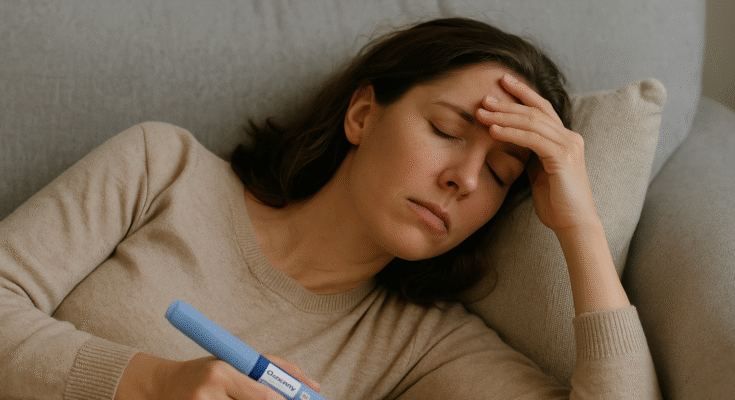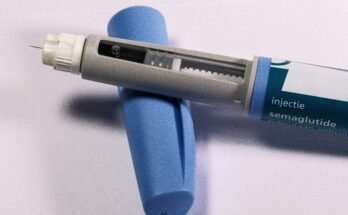Starting Ozempic (semaglutide) can be a big step toward managing type 2 diabetes or hitting weight loss goals. It’s a powerful medication, but for some, it comes with a pesky side effect: fatigue. If you’re feeling drained after starting Ozempic, you’re not alone. In this article, we’ll explore how long Ozempic fatigue typically lasts, why it happens, and how to manage it in a practical, conversational way. We’ll also tackle some common questions to help you feel more in control. Let’s dive in!
Why Am I So Exhausted on Ozempic?
How Long Does Ozempic Fatigue Last?
The good news is that Ozempic fatigue is usually temporary. How long it lasts depends on factors like your dosage, lifestyle, and how your body responds. Based on clinical data and user experiences, here’s a general timeline:
In the first 1–4 weeks, fatigue often peaks, especially when starting at the 0.25 mg dose. This is when your body is getting used to Ozempic’s effects on blood sugar and appetite. Between weeks 4 and 12, energy levels tend to improve as your system adjusts. Many notice tiredness fading during this period, especially if they address issues like dehydration or poor nutrition. After 12 weeks, significant fatigue usually resolves for most users. Some may feel mild tiredness longer, particularly after dose increases to 0.5 mg or 1 mg. If fatigue sticks around beyond three months, it might point to other issues like nutrient deficiencies.
Ozempic’s long half-life means it takes 1–2 weeks to clear your system after stopping, so mild fatigue might linger briefly. Persistent exhaustion after three months calls for a chat with your doctor to explore other causes or tweak your treatment.
Factors That Influence Fatigue Duration
Several things can affect how long fatigue lasts. Dosage changes, like stepping up from 0.25 mg to 0.5 mg, can trigger tiredness as your body adapts to more semaglutide. Eating too few calories or missing key nutrients can drag out fatigue, making a balanced diet essential. Dehydration from side effects like nausea can worsen things, so staying hydrated is critical. Poor sleep can amplify tiredness, and Ozempic’s digestive effects might disrupt rest. Other health conditions, such as low thyroid function or anemia, can also mimic or intensify fatigue.
Tips to Manage Ozempic Fatigue
Feeling wiped out doesn’t have to take over. You can boost your energy with some simple strategies. Drink plenty of water—aim for 9–13 cups daily. If plain water feels boring, try sparkling water or herbal teas. Low-sugar electrolyte drinks can help if you’re dealing with diarrhea or vomiting. Focus on eating nutrient-dense foods like lean proteins, whole grains, fruits, and veggies to keep energy steady and avoid nutrient gaps. Steer clear of sugary or processed foods that cause energy crashes.
Check your blood sugar regularly, especially if you’re on other diabetes medications. Low blood sugar can cause fatigue, so keep glucose tabs or snacks on hand as your doctor advises. Light exercise, like walking or yoga, can surprisingly boost energy and improve sleep—aim for 150 minutes of moderate activity per week. Prioritize 7–8 hours of quality sleep by limiting screen time before bed, keeping a consistent schedule, and avoiding late-day caffeine. If fatigue feels intense or lingers past 12 weeks, talk to your doctor. They might adjust your dose or check for underlying issues.
When to Seek Medical Advice
Ozempic fatigue is typically short-lived, but some signs mean it’s time to call your doctor. Reach out if fatigue severely disrupts your life or lasts beyond 12 weeks. Watch for low blood sugar symptoms like dizziness, shakiness, or confusion. Dehydration signs, such as dry mouth, dark urine, or extreme thirst, also need attention. If you have severe nausea, vomiting, or abdominal pain, don’t wait—get medical advice. Your doctor can check if Ozempic is the issue or if something else, like a nutrient deficiency or thyroid problem, is at play.
FAQs
1. How to Beat Ozempic Fatigue?
To fight fatigue, drink 9–13 cups of water daily and consider low-sugar electrolyte drinks if needed. Eat a balanced diet with proteins, complex carbs, and healthy fats for steady energy. Try light exercise like walking to boost circulation. Get 7–8 hours of quality sleep and monitor blood sugar to avoid lows. If fatigue doesn’t ease, consult your doctor to adjust your dose or investigate other causes.
2. How Long Does the Body Adjust to Ozempic?
Your body usually takes 4–12 weeks to adjust to Ozempic. The initial 0.25 mg dose often brings the most side effects, including fatigue, as your system adapts. By weeks 4–8, most people feel better as their body gets used to the drug. Full adjustment, including after dose increases, can take up to 12 weeks. If side effects persist, check in with your doctor.
3. Can I Take Supplements to Help With Ozempic Fatigue?
Certain supplements might help ease Ozempic fatigue, but always consult your doctor first. A multivitamin can address potential nutrient deficiencies from reduced food intake. Electrolyte supplements, like those with magnesium or potassium, may help if dehydration is an issue.
The Bottom Line
Ozempic fatigue can feel like a slog, but it’s usually a temporary bump. Most people see it fade within 2–12 weeks as their body adjusts. Staying hydrated, eating well, moving a little, and prioritizing sleep can help you manage it. Ozempic’s benefits for diabetes control or weight loss are worth it for many, but if tiredness lingers or feels overwhelming, don’t hesitate to talk to your doctor for tailored advice.

James Rowen is a certified medical writer and healthcare researcher specializing in endocrinology and metabolic health. With over a decade of experience analyzing weight management therapies, James has developed deep expertise in GLP-1 receptor agonists, including Ozempic.




